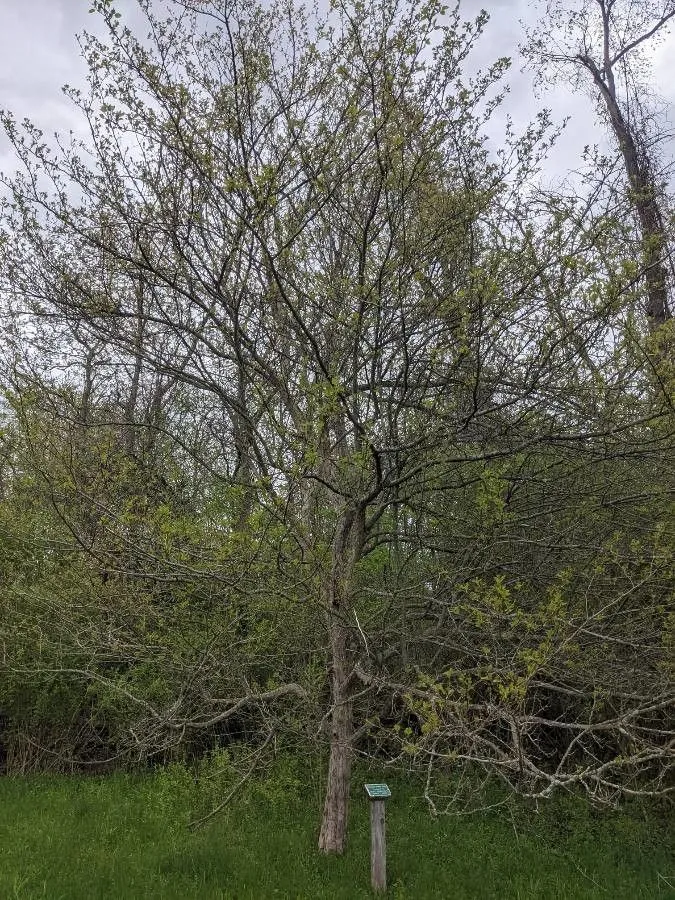
Author: L.
Bibliography: Sp. pl. 1:476. 1753
Year: 1753
Status: accepted
Rank: species
Genus: Crataegus
Vegetable: Unknown
Observations: NC. & E. U.S.A.
The Southernthorn, known scientifically as Crataegus viridis, is a captivating and resilient member of the Rosaceae family. Its botanical details trace back to an initial description in “Sp. pl. 1:476” by the renowned botanist Carl Linnaeus in 1753. This species is notably observed across North Carolina and the eastern regions of the United States, thriving in a variety of environmental conditions.
Characterized by its robust and thorny branches, the Southernthorn often forms dense thickets that provide shelter and protection for wildlife. The tree or shrub typically displays a proliferation of glossy, green leaves that turn to vibrant shades of yellow and red, offering a stunning autumnal spectacle.
The blossoms of Crataegus viridis are particularly striking, with clusters of small, white flowers that emerge in the spring. These blooms are not just picturesque but also play an essential role in supporting pollinators such as bees. By late summer to early fall, the flowers give way to the fruiting stage, producing small pome fruit that ripen to a rich red or occasionally a yellow hue. These fruits are a valuable food source for birds and other wildlife during the colder months.
Adaptable and hardy, the Southernthorn is well-suited to a variety of soil types, including those that are typically less fertile. It has a remarkable tolerance for urban pollution, making it an excellent choice for city landscaping projects. This resilience, combined with its aesthetic appeal, makes Crataegus viridis a popular choice for both naturalized and cultivated landscapes.
In addition to its ecological and aesthetic benefits, the Southernthorn holds a historical significance in American folklore and traditional medicine. Various indigenous cultures have utilized different parts of the plant for their supposed therapeutic properties, although such uses are less common in contemporary times.
In summary, the Southernthorn is a remarkable species that offers myriad benefits, from supporting local ecosystems to enhancing the visual appeal of gardens and parks. Its enduring presence across the eastern United States testifies to its adaptive nature and enduring appeal.
Eng: green haw, green hawthorn, southernthorn, southern thorn
En: Southernthorn, Green haw, Green hawthorn, Green hawthorne, Southern Thorn
Az: Yaşıl yemişan
Bg: Зелен глог
Fa: زالزالک سبز
Ru: Боярышник зелёный
Taken Apr 30, 2021 by Matthias Foellmer (cc-by-sa)
Taken Jun 9, 2022 by bri moyers (cc-by-sa)
Taken Oct 22, 2021 by Jonathan Magen (cc-by-sa)
Taken Apr 30, 2021 by Matthias Foellmer (cc-by-sa)
Taken Oct 22, 2021 by Jonathan Magen (cc-by-sa)
Taken Apr 30, 2021 by Matthias Foellmer (cc-by-sa)
Taken Apr 30, 2021 by Matthias Foellmer (cc-by-sa)
Taken Sep 5, 2022 by grašovec dražen (cc-by-sa)
Taken Oct 22, 2021 by Jonathan Magen (cc-by-sa)
Family: Myrtaceae Author: (F.Muell.) K.D.Hill & L.A.S.Johnson Bibliography: Telopea 6: 402 (1995) Year: 1995 Status:…
Family: Rubiaceae Author: Pierre ex A.Froehner Bibliography: Notizbl. Bot. Gart. Berlin-Dahlem 1: 237 (1897) Year:…
Family: Sapindaceae Author: Koidz. Bibliography: J. Coll. Sci. Imp. Univ. Tokyo 32(1): 38 (1911) Year:…
Family: Asteraceae Author: A.Gray Bibliography: Pacif. Railr. Rep.: 107 (1857) Year: 1857 Status: accepted Rank:…
Family: Fabaceae Author: Medik. Bibliography: Vorles. Churpfälz. Phys.-Ökon. Ges. 2: 398 (1787) Year: 1787 Status:…
Family: Aspleniaceae Author: (Cav.) Alston Bibliography: Bull. Misc. Inform. Kew 1932: 309 (1932) Year: 1932…